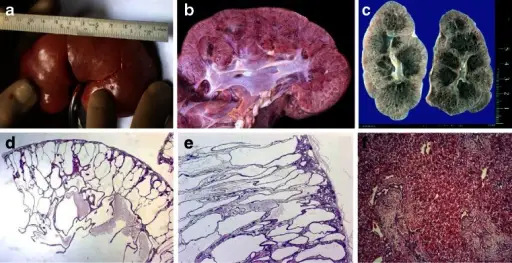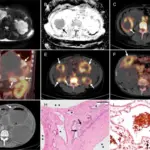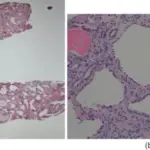Autosomal recessive polycystic kidney disease is a rare developmental anomaly also called Childhood polycystic kidney disease characterized by an autosomal-recessive type of inheritance.
What is the Pathology of Autosomal Recessive Polycystic Kidney Disease?
The pathology of autosomal recessive polycystic kidney disease is:.
-Etiology: The cause of autosomal recessive polycystic kidney disease is genetic.
-Genes involved: PKHD1.
-Pathogenesis: The sequence of events that lead to autosomal recessive polycystic kidney disease follow mutation of the PKHD1 gene.
-Morphology: The morphology associated with autosomal recessive polycystic kidney disease shows enlarged kidney, renal collecting duct dilatation and elongation. Small cysts in the cortex and medulla.
-Histology: The histology associated with autosomal recessive polycystic kidney disease shows cylindrical, saccular dilation of all collecting tubules.
How does Autosomal Recessive Polycystic Kidney Disease Present?
Patients with autosomal recessive polycystic kidney disease typically high in males present at the age range of infancy to childhood. The symptoms, features, and clinical findings associated with autosomal recessive polycystic kidney disease include abdominal masses, proteinuria, polyuria, and hypertension. Classic Potter facies.
How is Autosomal Recessive Polycystic Kidney Disease Diagnosed?
Autosomal recessive polycystic kidney disease is diagnosed through laboratory studies such as genetic testing, blood and urine studies, GFR, BUN, and urinalysis. Imaging studies such as abdominal radiography reveals enlarged kidney. Chest radiography reveals pulmonary hypertrophy.
How is Autosomal Recessive Polycystic Kidney Disease Treated?
Autosomal recessive polycystic kidney disease is treated through symptomatic medical care- antihypertensive therapy, (ACE) inhibitors, calcium channel blockers, and beta blockers. Surgical management.
What is the Prognosis of Autosomal Recessive Polycystic Kidney Disease?
The prognosis of autosomal recessive polycystic kidney disease is poor. Highly associated with end stage renal disease.



